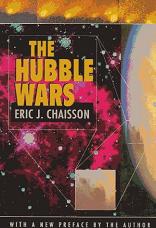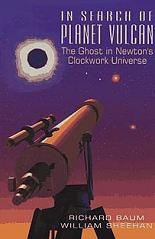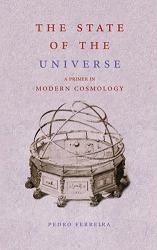- African sf recommendations from Nine Worlds –
- Comet Flyby Missions for Mars Rovers | The Planetary Society – On October 19, the Mars rovers—like their orbiting cousins—will become comet flyby missions. Comet C/2013 A1 (Siding Spring) will pass within 140,000 kilometers of Mars. This is less than 20 times the distance from Mars to its smaller moon, Deimos. Those distances provide a sense of scale: Deimos appears only a few pixels across to the rover cameras, so the nucleus of the comet will effectively a point source. The coma of the comet, tens of thousands of kilometers across, will take up a substantial fraction of the sky.
- Loncon 3 – The 72nd World Science Fiction Convention (Worldcon) – Renegade Revolution – To be perfectly honest I had no idea what to expect when going to Loncon 3. Until recently I hadn’t heard of it but the more I looked into it, the more interested I became.
- Flat Out: Worldcon on Wheels – I rolled up at the Excel bright and early on Thursday 14th, and I have to say Access was excellent. I was greeted by one of the volunteers before I even reached the registration queue, which they told me was 45 minutes long at that point, and whisked away to the Access Desk, where I was given a seat while the volunteer dashed off to pick up my badge and registration packet. Even the failure of the Access ribbons to appear was being dealt with courtesy of improvisation with tape and a marker pen in the best traditions of fandom.
- WorldCon: some thoughts | Writings from Otherworld – Well, tonight we’re off to Dublin for Shamrokon. Before I haul myself onto the plane, tail-end of conflu and all, here are some thoughts about my first WorldCon experience.
- The Story of FRES – A Summary – Think Defence – What FRES is remains a puzzle, wrapped in an enigma, an enigma that wears clown shoes.
Articles with the Tag astronomy
Sensawunda
Centauri Dreams on the increasingly many brown dwarf stars that are being found in our stellar neighbourhood and how cool they are:
In fact, it gives me pause to reflect that the focaccia I baked the night before last needed higher temperatures (500 degrees Fahrenheit) than the coolest of these brown dwarfs can supply. Most of the new objects in the Spitzer study are T dwarfs, the coolest class of brown dwarfs known, defined as being less than 1500 Kelvin (1226 degrees Celsius). One of the dwarfs in this study is cold enough that it may represent the hypothetical class called Y dwarfs, part of a classification created by a co-author of the paper, Davy Kirkpatrick (Caltech).
Brown dwarfs may be the most common stellar objects around as this representation shows. You wonder if brown dwarfs could have planets and if so, whether those planets could have life on them and if so, how it’s adapted to the extremely cold temperatures such planets must suffer from. Of course, from a hypothetical intelligent species arising on a planet around a brown dwarf, we ourselves would be exotic extremophilic lifeforms: imagine being able to exist at temperatures where water is a liquid!
The Hubble Wars – Eric J. Chaisson

The Hubble Wars
Eric J. Chaisson
386 pages including index
published in 1994/1998
Having worked on a somewhat troubled project for the past few years, it’s a great comfort to know that even big science projects like the Hubble Space Telescope can suffer from similar problems. In Hubble’s case, bad project management and quality control meant it was only discovered after the space telescope had been launched that its main mirror had a serious flaw in its grinding which meant that it couldn’t focus properly. But that was only the most *ahem* visible of the Hubble project’s problems, as Eric J. Chaisson explains. And he should know, as he was a senior staff scientist at the Space Telescope Science Institute when these problems occurred and hence had a first rank seat for them.
The Hubble Wars was originally published in 1994 and based on notes Chaisson made during Hubble’s commisioning period after launch, when the problems with the lens, as well as several others first cropped up. This then was largely written in the heat of the moment, without the benefit of hindsight, even if the edition I got out of the library was the updated 1998 one. This update was largely confined to a new foreword, an attempt to correct some of the misconceptions and hyberbole in the news coverage of Hubble discoveries. The rest of the book was largely left unchanged, though every now and then new developments are alluded to — and they’re not always well integrated. But that’s just a minor quibble. What remains is an important insight in how a big science project can go wrong, as it happened.
In Search of Planet Vulcan – Richard Baum and William Sheehan

In Search of Planet Vulcan
Richard Baum & William Sheehan
310 pages including index
published in 1997
The classic idea of the universe was that it was geocentric: the Earth in the centre, with the planets, moon and the sun circling around it and the fixed stars as background. Over the centuries that central idea had to be modified with increasingly complex epicycles as the theory had to be adjusted to observational evidence. It was only in the sixteenth century that Copernicus, Kepler and Bruno challenged this Ptolemaic model and replaced it with the truth: that all the planets, including Earth revolved around the Sun. Copernicus was the first to propose this, Bruno would die at the stake for his advocacy but it was Kepler who figured out how the planets revolved and what governed their orbits. more than half a century later Isaac Newton formulated his laws of gravity, joining Kepler’s laws with more mundane events on Earth, finally providing a complete model of the workings of the Solar System. From then on, any planetary orbit could be calculated with the right observations and the use of Kepler’s and Newton’s laws.
except for one. The orbit of Mercury remained, as the subtitle of Baum and Sheehan’s book has it, “the ghost in Newton’s clockwork universe”. Time and again, no matter how carefully the observations were made and how intricate the calculations were, the two just would not line up. Even the best astronomers in the world, with the best observations could not make Mercury’s orbit confirm to what it should be according to Newtonian physics. It wasn’t until Einstein reformulated the laws of gravity that the reason why became clear. Newton’s laws break down near massive objects like the Sun and although “good enough” for most situations, Mercury’s orbit was just too close to the Sun and Newtonian physics just wasn’t accurate enough. Of course, until Einstein found the real answer, astronomers sought for other explenations for Mercury’s wrong orbit — and the most likely candidate was an undiscovered planet even closer to the Sun: Vulcan.
The State of the Universe – Pedro G. Ferreira

The State of the Universe
Pedro G. Ferreira
320 pages including index
published in 2006
I felt the need to reacquaint myself with modern astrophysics as it has been far too long since I’ve read anything about it. Sure, I do watch The History Channel’s Universe series whever I catch it, but that doesn’t tell me much I don’t know already, while following the vast array of astronomy blogs out there is no real substitute, as they do assume a certain familiarity with the current state of the art. Long live the public library therefore, for providing quick access to what looks like exactly the book I need: The State of the Universe: a Cosmic Primer. Written by Pedro Ferreira, a lecturer in Astrophysics at Oxford, it’s meant as a layperson’s introduction to what astrophysics thinks the universe looks like and what makes it tick.
The State of the Universe is built up logically from first principles. Ferreira starts with a short overview of classical Ptolemaic cosmology, with the Sun revolving around the Earth and how it was succeeded by the heliocentric cosmology of Copernicus and Gallileo. Over several chapters he then shows how our knowledge of the size and complexity of the universe expanded, from what was once thought to be no bigger than our Solar System, through an understanding of how big our Galaxy actually and finally to an appreciation of the idea that all those galaxy shaped nebulas are actually galaxies as well. Then he goes on to the other end of the scale and explains the physics of the universe: the fundamental forces that shape it (gravity, electromagnetism, the strong and weak force), a quick sketch of the whole zoo of the particles that make up the matter and energy in it and how it all sits together. From the classic Big Bang idea of the evolution of the universe he finally moves on to the cutting edge of current physics, where it all gets a lot less clear what’s real and what’s just clever theorising.